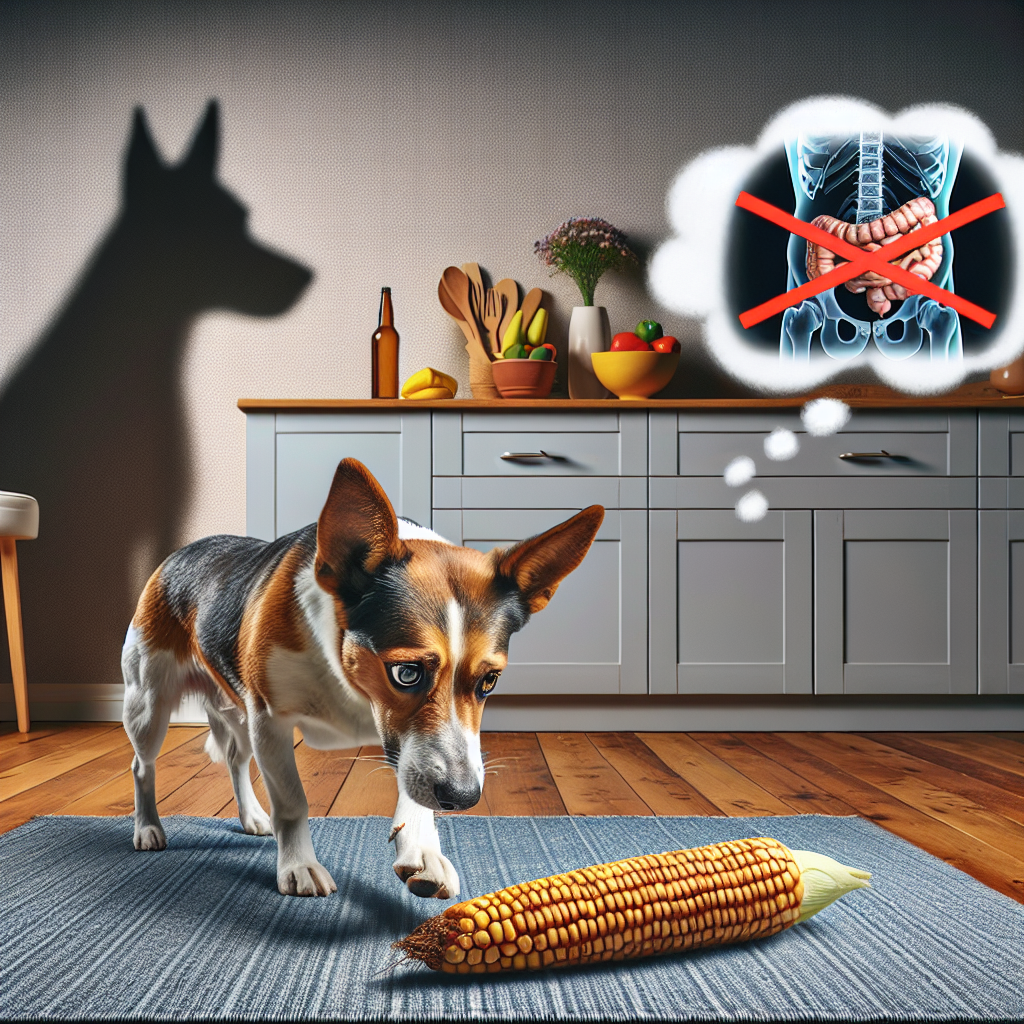If you’re a dog owner, the thought of your furry friend getting into something harmful can be terrifying. The dangers of corn cobs are often underestimated, yet they can pose serious risks to your canine companion. My dog’s unfortunate snack incident serves as a stark reminder of the hidden perils that can lurk in seemingly innocent food items. Let’s dive deep into why corn cobs can be harmful and navigate the painful experience that turned my routine day into a nightmare.
Understanding the Risks: Why Corn Cobs Can Be Harmful to Dogs
Corn cobs may seem harmless, often appearing as leftover scraps from family barbecues and summer picnics. However, these seemingly innocent remnants can be deceptively dangerous for dogs. One of the primary concerns is that corn cobs are not digestible. When ingested, they can cause severe gastrointestinal obstructions. This occurs when the cob lodges in the intestines, leading to a potentially life-threatening scenario that requires immediate veterinary intervention.
Furthermore, the texture of corn cobs can cause additional complications. Their fibrous nature can result in sharp edges, which may tear the digestive tract as they pass through. This can lead to internal bleeding and severe discomfort for your dog. The symptoms of such incidents may manifest as vomiting, abdominal pain, or lethargy, all of which signal an urgent need for veterinary care. Understanding these risks is crucial for dog owners who may be unaware of what can happen when their pets scavenge through the trash.
Lastly, many dog owners may not realize that the danger extends beyond just the cobs themselves. Ingesting corn products can also lead to pancreatitis, a painful inflammation of the pancreas, especially if the dog consumes large quantities of corn-based foods or treats. Recognizing the multitude of dangers associated with corn cobs can empower dog owners to take proactive measures and safeguard their pets’ health.
A Personal Account: My Dog’s Near-Fatal Experience with Corn Cobs
One sunny afternoon, I came home from work to find my golden retriever, Max, acting strangely. He was lethargic and seemed to avoid his favorite toys. My heart sank as I discovered remnants of a corn cob strewn across the living room floor. My heart raced as I recalled that I had left dinner scraps in the trash earlier that day. I quickly called my veterinarian, fearing that Max had consumed part of the cob.
As I described the situation, my vet’s voice turned serious, informing me that corn cob ingestion could lead to life-threatening complications. I rushed Max to the clinic, where an X-ray revealed a blockage in his intestines. The vet explained that this was a common, yet often overlooked, issue that can arise from dogs eating corn cobs. Surgery was necessary to remove the obstruction, and I felt a wave of panic wash over me as I realized how close I had come to losing my beloved pet.
After an agonizing few hours, Max emerged from surgery, groggy but alive. The relief I felt was indescribable, yet it was overshadowed by the guilt of having allowed him access to something so dangerous. This experience served as a powerful lesson in pet ownership. It made me acutely aware of the hidden risks in everyday items and reinforced the importance of vigilance in keeping potentially harmful objects out of reach.
The dangers of corn cobs should not be underestimated. My experience with Max serves as a cautionary tale for all dog owners. It’s vital to be proactive in preventing access to harmful items and to educate ourselves about the potential risks our pets face in their environment. By understanding what can hurt them and maintaining a vigilant watch over their eating habits, we can ensure that our beloved companions remain safe and healthy. If you’ve ever had a similar experience or are looking to learn more about keeping your pet safe, engage with your veterinarian and explore resources that delve deeper into pet health. Your furry friend is worth every effort!
Measuring Your Dog’s Height: A Comprehensive GuideUnderstanding How Dogs Become Infested with FleasUnderstanding the Lifespan of Pug Dogs: What to ExpectRelevant LinkRelevant LinkRelevant Link
